Have you ever noticed a difference in traction between an all-terrain tire and a mud-terrain tire? If so, it’s because of tread pattern and the way the tire is set up. But what happens when no tread pattern out there works for you? The answer is, you make your own.
Ideal Heated Knives has a tool that makes it possible. For us, grooving was something new. We have seen it done at the short-course track, but actually grooving a tire was something we couldn’t wait to do.
The Groover
Ideal Heated Knives offers an affordable hand-held groover that’s constructed for easy, efficient and long-lasting operation. The solid brass head keeps strong, constant heat on the cutting blade, which rapidly heats the material to be cut.
“Ideal Heated Knives are manufactured with a pistol grip handle that makes tire grooving easier,” John Sukenik of Ideal Heated Knives said. “The heating capacity is 250 watts, and there are versions for either 110 or 220 volts. ”
The depth of the cut is controlled by the adjustable blade. The brass heads and razor-sharp blades are available in nine different widths. Blades also come in five different strengths and a variety of tip shapes.
“The heated knives are primarily used for cutting grooves of various widths and depths in heat-sensitive materials, like rubber and plastic, and for trimming those materials,” Sukenik explained. “Grooving blades must be used with the matching head. For example, a no. 4 blade with a no. 4 head.”
Each head has a matching blade. The head determines the width of the cut, while the blade can adjust the depth. If the blade is installed upside down, the groover can be used to sipe tires.
Changing a blade isn’t difficult. With the groover cool, there are half-inch square clamps on the grooving heads that are held in place by a screw. To attach the grooving blade, it is as easy as loosening the clamp screw until the blade can be pinched together and slipped between the clamps.
The blade depth will be adjusted depending on the depth of the cut that is going to be done. Once the blade is set and the head has been installed in the groover, it is as simple as plugging it in and letting it heat up. The longer and hotter the blade gets, the easier the cutting will be.
Cutting Rubber
One of the biggest things to keep in mind when grooving a tire has nothing to do with the groover or tire. It’s safety, and it should be the first thought on your mind. Some quick safety tips are:

Short-course tires are grooved to the track conditions and the driver's preference.
Efficient grooving with the heated knife is a function of practice and of adjusting the cutting speed to the width and depth of the groove. The part of the brass head in front of the blade should be kept in contact with the area to be cut to preheat the material for easier cutting. More heat loss occurs during wider and deeper cuts, which should be made at lower speed.
One arena where we have seen tire grooving is in short-course racing. To get an expert’s thoughts, we spoke with Mickey Thompson Tires tire groover Michael Dwyer. “There are a lot of factors that go into grooving tires, like forward or side bite, dry or loamy dirt, and hot or cool conditions,” he explained. “The truck set up and driver style also play into how you would cut the tire. We also sipe tires.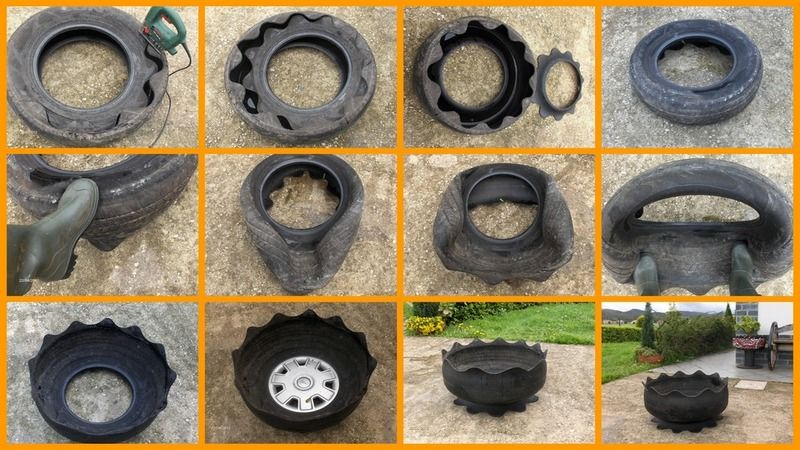 So we take all of this into consideration and decide which cut will suit the driver best.”
So we take all of this into consideration and decide which cut will suit the driver best.”
One thing to keep in mind when grooving tires is to accept reality when they start going bald. Tires are still a safety item on the vehicle and need to be treated that way. When tires get to the wear bars it is time to replace them, not groove them.
Final Cuts
This was our first time personally grooving a tire. We were excited to test out the groover and see what we could do on a Mickey Thompson short-course tire. We went with a short-course tire for the simple fact that there were very few tread blocks, and we could even create our own design.
We made sure the head of the knife stayed on the tread block, as we cut through the tire tread.
With the groover warmed up, we let it sit for a couple of hours to get it nice and warm, we took the blade to the tire and started cutting rubber. The blade went through the rubber like a hot knife through butter. We did not start with deep cuts, but worked our way up to matching the depth of a tread block the tire came with.
We did not start with deep cuts, but worked our way up to matching the depth of a tread block the tire came with.
Overall, the Ideal Heated Knives tire groover did everything that it was supposed to with little effort. We look forward to playing with the groover more and seeing what we could really do with it. One tip that Dwyer would recommend for someone new to grooving is to find some old used tires to practice on. Messing up an old tire doesn’t keep a vehicle off the road or make it unsafe.
Before (left) and after (right) grooving a tread block on the tire.
For more information on Ideal Heated Knives and its product, be sure to visit their website.
| How-To - Wheels and Tires
They say that anybody can restore a rare old car, but that it takes a real man to make a hot rod out of it.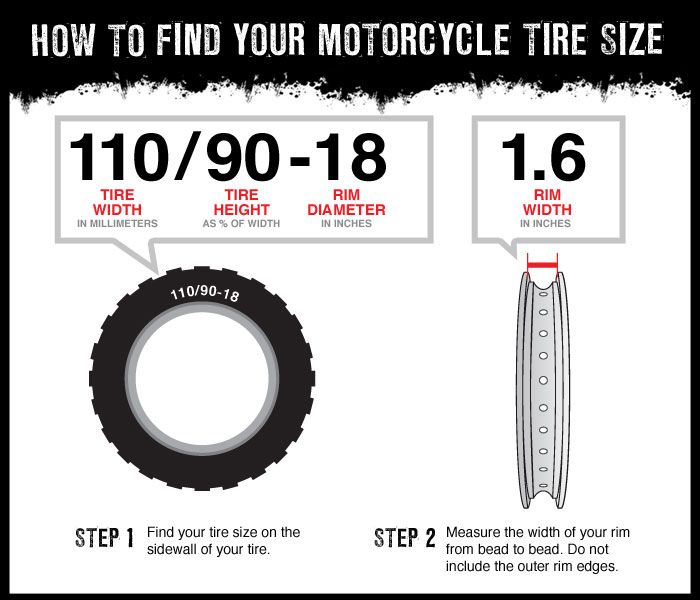 To some extent the same could be said for modifying perfectly good tires, grooving them in an effort to make them work even better. Either modification-car or tire-involves taking a chance, because there's no guarantee that the end result will be as good as the original.
To some extent the same could be said for modifying perfectly good tires, grooving them in an effort to make them work even better. Either modification-car or tire-involves taking a chance, because there's no guarantee that the end result will be as good as the original.
Tire manufacturers must design treads that deliver decent longevity and handling on paved roads, usually at the expense of trail performance. It's one of many compromises made in tire manufacturing, but it's one we can do something about. What we'd like to accomplish is primarily to increase the conformability of the tread area. Ideally, in the process we also get a contact pressure that's better suited for the vehicle and terrain. We can do this by altering the tread a bit through a process called tire tuning, which involves cutting new, deeper, or wider grooves in the existing tread. Tire tuning has nothing to do with "tuner cars," those pesky low and loud little imports that zoom around at the level of our driveshafts.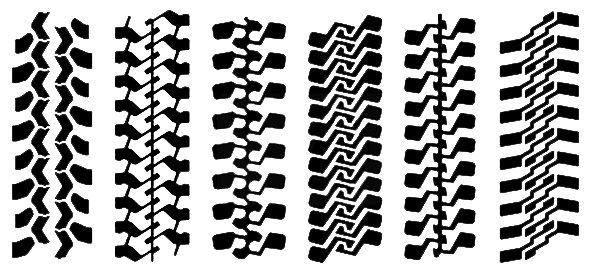 It's called tire tuning because that's what you do-tune the tire tread to make it work its best on the trail.
It's called tire tuning because that's what you do-tune the tire tread to make it work its best on the trail.
The Benefits
There are definite advantages to tuning a tire for trail use. They include increased tread conformability and the creation of more biting edges. A tire with more flex in the tread area rolls more easily over rough terrain since it can better conform to trail obstacles, and consequently it provides increased traction and improved ride quality. Because the tread can move more when tuned, it is possible to get traction and ride equal to a standard tire while running higher inflation pressures, if you so wish. Or, you could enjoy even more flexibility at your normal trail pressures. Either way, the range of adjustability is increased, thanks to the relaxing of tensions across the tread area. Light vehicles with large tires are the most likely to benefit from tuned tires. Large 4x4s generally have enough weight to make as-delivered tires conform, especially when aired down.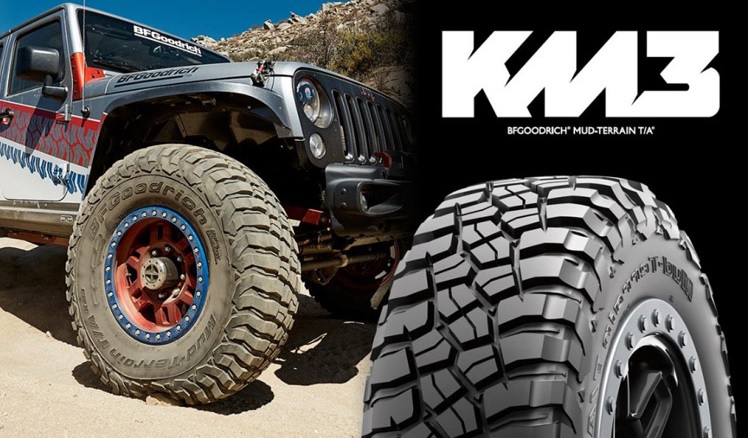
Having more biting edges on a tire tread is rarely a bad thing, and, much like siping, each cut in a tuned tire adds extra bite. Basically, you can get all-terrain grip from a mud tire but without losing the mud tire's mudding qualities. Likewise, making some additional cuts could make a mild tread more all-terrainy, while still offering flotation in soft stuff. With more biting edges and better conformability, most tuned tires end up working better on the trail. Bias tires generally respond the best, getting a really nice round tread arch when the tread is freed up. Radials are built to not flex and squirm in the tread area and use stiff steel belts that instead add contact-patch stability and make them excel on pavement, so the carcass construction itself prevents much of the potential tread movement regardless of tread layout. Still, radials also can benefit from tire tuning. Being designed not to conform like a bias tire, they can use all the help they can get in the flex department-for trail duty, on a light vehicle.
The Drawbacks
Two things are pretty much guaranteed to happen when tuning your tires. First, the warranty is void once the first cut is made, and technically the tire is no longer street-legal once it's modified. Chunking, where parts of (or entire) lugs come off, also is more likely with tuned treads, especially if little or no thought was applied to how the shoulder lugs were grooved.
That you can't buy tires already made for maximum trail performance is simply because the tire companies must take longevity, noise, rolling resistance, operating temperature and steering response into consideration when building tires for the masses. Those tread blocks were designed the way they are for many reasons, but maximum traction or conformability weren't the main priorities. Tuned tires will wear faster, be noisier, and require more power to turn, plus they'll run hotter and handle worse on the street. Tire manufacturers have to make tires that will work even under the worst conditions, which would be for heavy vehicles on pavement, at speed.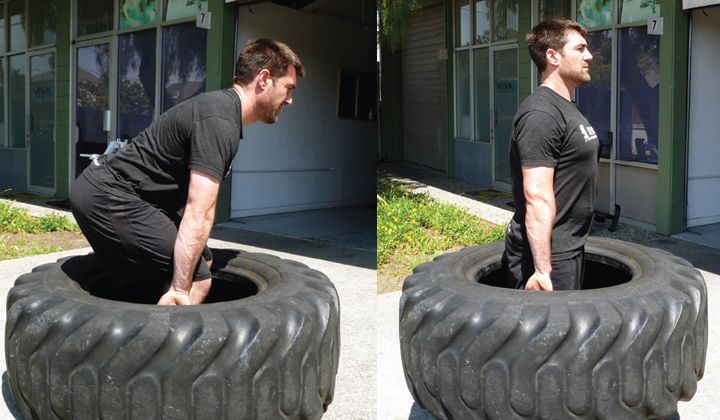 Tuned tires shine at the opposite end of the spectrum.
Tuned tires shine at the opposite end of the spectrum.
In reality, the drawbacks apparently aren't all that negative, compared to the benefits. Grooved tires were a very rare sight when Four Wheeler first ran a story on tire tuning some eight years ago. These days you see tuned tires all over the trails, and it makes perfect sense when considering that the drawbacks are pretty much limited to street use.
The Procedure
Making cuts in rubber isn't particularly easy-not when you want it to get cut, anyway. That's why there are special tools for the purpose, called tire groovers. Using a heated and very sharp U-shaped blade, a groover slices through tread blocks with relative ease. Good tire groovers have several heat settings and the trick is not to use any more heat than necessary-when there's smoke there's a blade overheating. Since the blades cost from 50 cents to $1.50 each, it's best to use the lowest heat setting possible.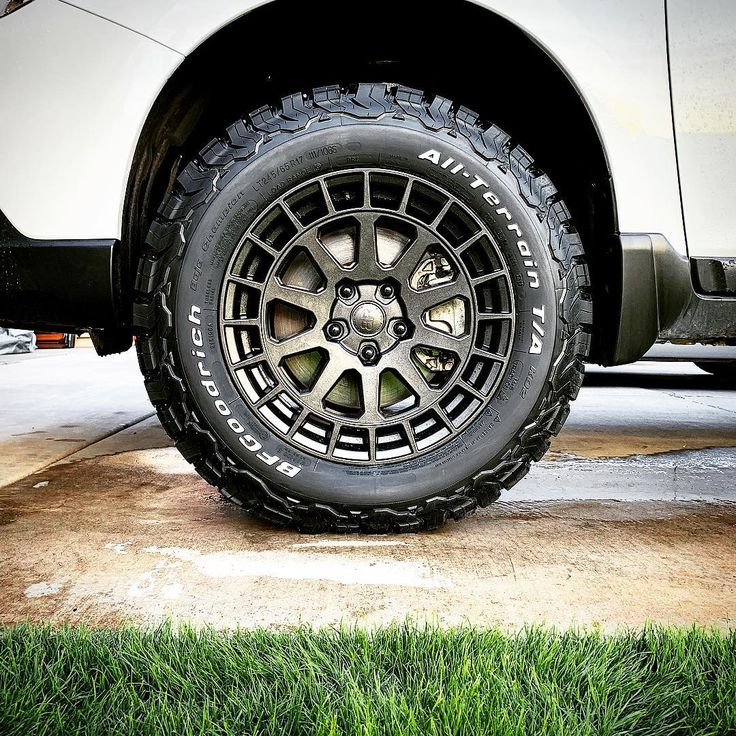 Once you get more familiar with the procedure, higher settings can be used, if the speed of cutting is increased accordingly. Expect to waste a few blades before getting the hang of it. You may want to practice on a junk tire before modifying your good trail treads.
Once you get more familiar with the procedure, higher settings can be used, if the speed of cutting is increased accordingly. Expect to waste a few blades before getting the hang of it. You may want to practice on a junk tire before modifying your good trail treads.
Before making the first cut, have a plan. You definitely need to figure out what you want to cut ahead of time. Since the process is irreversible, think first and cut later. Long before plugging in the groover, we drew some potential cutting lines on paper, using an enlarged photocopy of the tread pattern from an ad. These ideas were bounced off some people that really know tires and the art of tuning them. The revised version was then drawn on a tire, using chalk, and we could ponder the recommended grooving versus what we'd wanted to do. Not being complete idiots, we went with what the experts felt would work best.
Remember that you can always cut more later on, but once a cut is made it is permanent.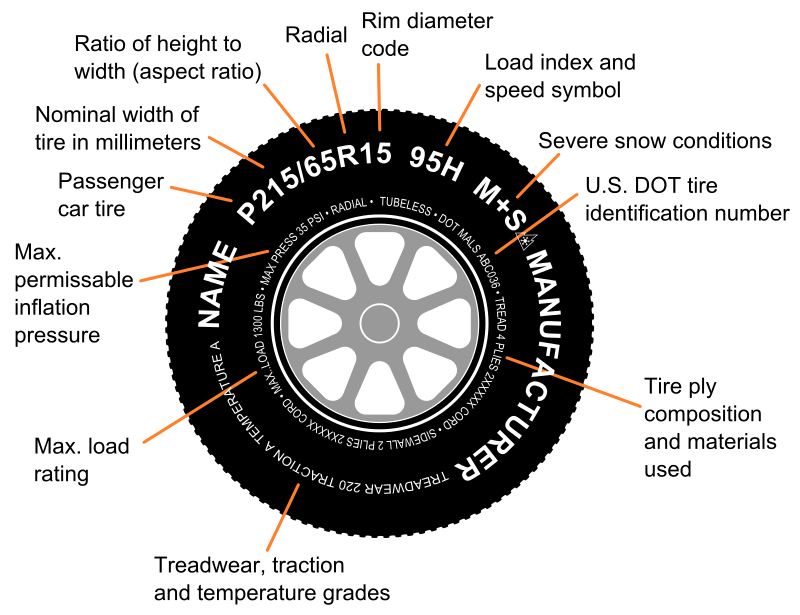 It's perfectly OK to make an asymmetrical pattern, for example, leaving the outside shoulder lugs more intact for better cornering. Also, the front and rear tires can be tuned differently.
It's perfectly OK to make an asymmetrical pattern, for example, leaving the outside shoulder lugs more intact for better cornering. Also, the front and rear tires can be tuned differently.
Once you get going, you'll find that the first five or six inches of tread tuning is great fun-but you soon realize that there's eight feet or so to go. And then three more tires. Knowing that the effort was well worth the resulting improvements helped us keep going, but whittling away a few ounces at a time until the piles of small rubber pieces on the floor totaled 12 pounds was, well, work. You may want to groove just one pair of tires at first and try them out on the trail before attacking the other two. It'll help tell if you tuned them too little, about right, or (gulp) too much for your application.
The Results
After being tuned as shown in this story, these 35x15.5-15 Super Swampers work great-at least they do on a vehicle weighing less than 3,000 pounds, with about 4 psi in the front tires and 3 in the rears.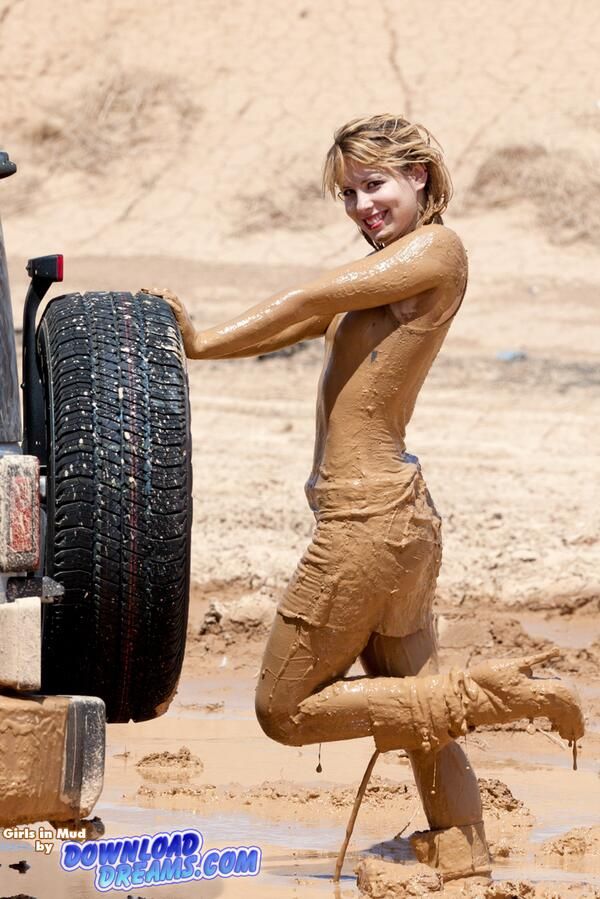 Traction on rocky trails was much improved since the tires could conform far better than before, and the new gripping edges surely didn't hurt. We were told not to cut the shoulder lugs all the way out to the edge, which could be why no chunking whatsoever has taken place. On the other hand, the tires haven't spun much on rocks since they were tuned. A very aggressive design, these tires still wanted to dig down when on soft surfaces. At the Tierra Del Sol Desert Safari, for example, they often left two deep ruts behind rather than just going up and over like a milder tread could. Since the tuned Swampers work so well on rocks and other firmer trail surfaces, we'll leave them as is, rather than try to make sand tires out of mudders. A few hundred miles of pavement driving, at about 10 psi, haven't left any bad impressions-not in us, or the tires. Sure, they're a bit noisier and have noticeably higher rolling resistance now, but we could air up a bit more or stay off the pavement altogether if those things were issues.
Traction on rocky trails was much improved since the tires could conform far better than before, and the new gripping edges surely didn't hurt. We were told not to cut the shoulder lugs all the way out to the edge, which could be why no chunking whatsoever has taken place. On the other hand, the tires haven't spun much on rocks since they were tuned. A very aggressive design, these tires still wanted to dig down when on soft surfaces. At the Tierra Del Sol Desert Safari, for example, they often left two deep ruts behind rather than just going up and over like a milder tread could. Since the tuned Swampers work so well on rocks and other firmer trail surfaces, we'll leave them as is, rather than try to make sand tires out of mudders. A few hundred miles of pavement driving, at about 10 psi, haven't left any bad impressions-not in us, or the tires. Sure, they're a bit noisier and have noticeably higher rolling resistance now, but we could air up a bit more or stay off the pavement altogether if those things were issues.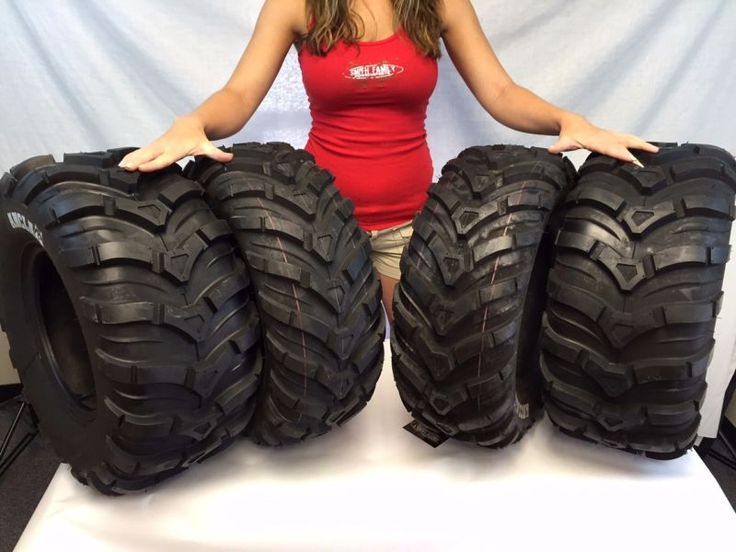 The bottom line is that these tires work far better on the trail than they did before being tuned-at least on this particular vehicle. And since we really like things that help trail prowess, even if it compromises street manners, tuned tires are definitely a cut above untuned tires, in our opinion.
The bottom line is that these tires work far better on the trail than they did before being tuned-at least on this particular vehicle. And since we really like things that help trail prowess, even if it compromises street manners, tuned tires are definitely a cut above untuned tires, in our opinion.
Contact Pressure-Friend or Foe?
As specialized as tires are these days, they're still quite compromised. One size may fit them all, so to speak, but there is only one ideal contact pressure for any given terrain. If the 35x15.50-15 Swampers shown in this story were mounted on a Suburban, each square inch of tire tread contacting the ground would have to support a fair amount of weight-pounds per square inch. Lowering the tire inflation pressure puts more of the tread in contact with the ground, thereby lowering the contact pressure although the vehicle weight is unchanged.
If those same 35x15.50s were on a much lighter Samurai, the contact pressure would obviously be lower than it was with the Suburban, and at any given tire inflation pressure. Most likely, there wouldn't be enough contact pressure for optimum traction with such a large tire (footprint) on a Samurai, regardless of inflation pressure, and is one situation where tire tuning could help immensely.
Most likely, there wouldn't be enough contact pressure for optimum traction with such a large tire (footprint) on a Samurai, regardless of inflation pressure, and is one situation where tire tuning could help immensely.
If your tires tend to spin on top of the trail surface, you may want to try increasing the contact pressure. This can be accomplished either by airing up a bit (there goes the ride quality), running a more aggressive or narrower tire (costly experiment), or try tuning what you've got (no going back with this one). Should your tires want to dig down more than go forward you may already have too much contact pressure for the terrain, and/or a tread that's too aggressive. Try airing down even more (very cost effective), use a less aggressive tread pattern (looks aren't everything, really) or use a wider tire.
Grooving the tread effectively increases the contact pressure since there's less rubber remaining to meet the ground.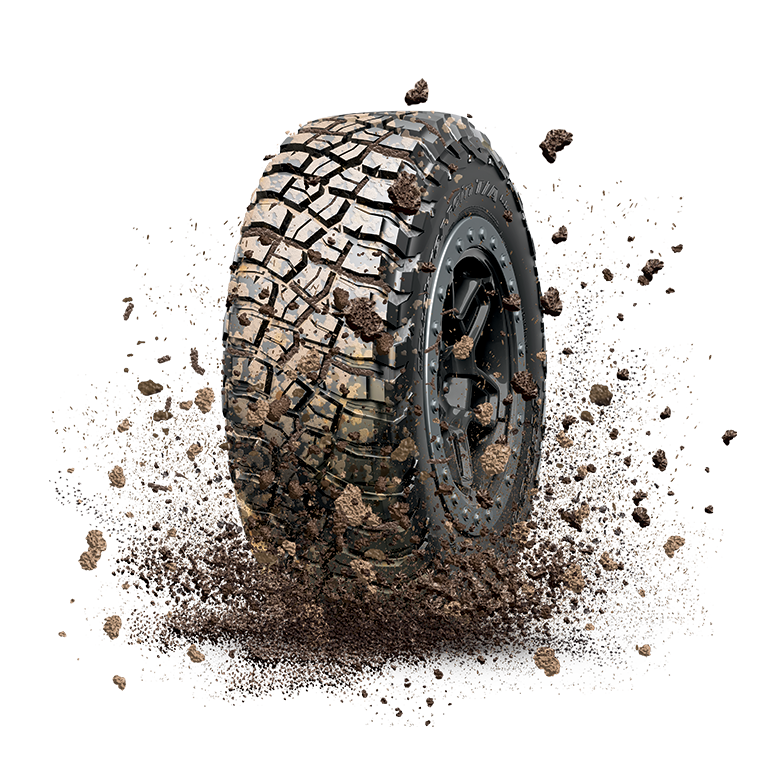 While you can easily increase contact pressure with tire tuning, keep in mind that there can be too much of a good thing. You'll have to experiment to find out what works best for your vehicle, with your tires, on the trails you drive.
While you can easily increase contact pressure with tire tuning, keep in mind that there can be too much of a good thing. You'll have to experiment to find out what works best for your vehicle, with your tires, on the trails you drive.
Where to Buy a Groover
If you're feeling groovy about the idea of cutting up good tires and would like to get the needed equipment, don't bother looking in the hardware store. You'll find several sources for tire groovers on the Internet, including Ideal, Rillfit and Treadtech units. We found one for as little as $51.95, and a cheapy is the way to go if you're only going to tune one set of tires. At the opposite end of the scale, a nice Rillfit was advertised for $475. Your local tire dealer is usually a good place to order a groover, since they buy their supplies from companies that handle most anything tire-related. Or you could order one yourself from Tech Inc., P.O. Box 14310, Lenexa, KS 66219, 800/255-1002.
But what to do if the erased tire relief does not give the proper level of grip? In this case, you need to take a groover to cut the tread and restore the grip level.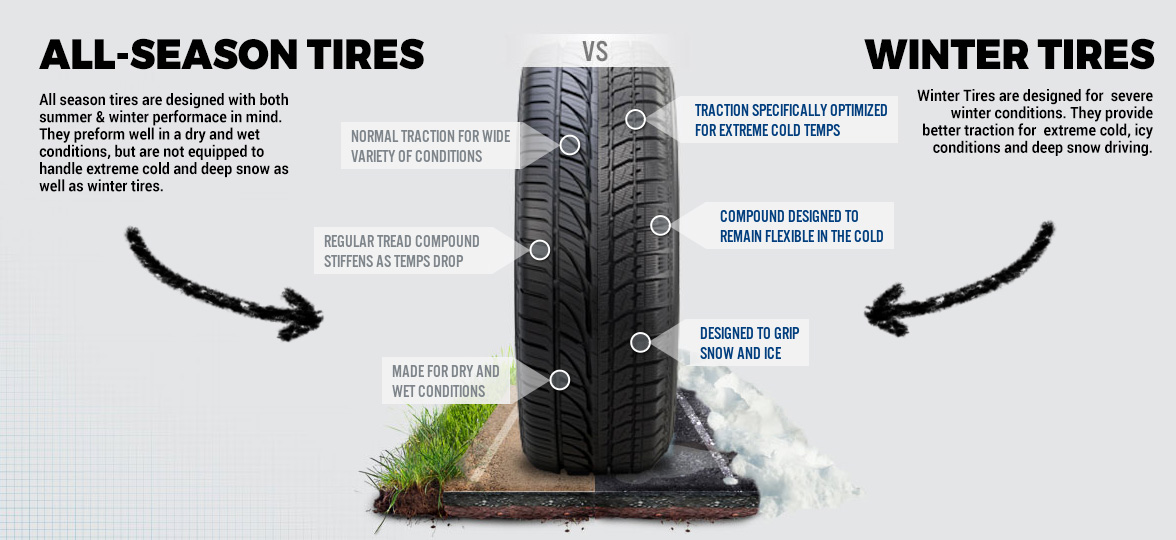 How to do it? Read about it in our article.
How to do it? Read about it in our article.
Factory cutting of lamellas in car tires involves the creation of grooves with a sufficient depth, but over time their height melts, rubbing against the asphalt and the ground surface.
The minimum admissible knurling depth cannot be less than:
If the tire is worn down to the marker sewn into the rubber, you will have to buy a new tire. If you want to avoid unnecessary expenses, try cutting new grooves in thick rubber before its height drops below 0.8-2.0 millimeters.
To restore rubber, you will need a special groover knife and a good eye. If you have the skills and a special tool, you can cut the tread with your own hands in just one or two hours, saving a lot of money. However, this technology does not work with all tires.
| Photo of UAZ car tire before cutting | Photo of UAZ tire after cutting |
|
| |
The widespread fascination with ecology and the threat of global warming has changed the fate of worn wheels. Previously, such tires formed man-made mountains in every landfill. Today, according to the requirements common in the European Union, the following types of tires are subject to mandatory restoration:
Restoration of truck tires and swamp tires for SUVs is possible only with the assistance of a manufacturer who has provided for compatibility with cutting technology at the rubber production stage. Therefore, it is possible to cut tires at home only if the inscription - REGROOVABLE is read on their sides.
Therefore, it is possible to cut tires at home only if the inscription - REGROOVABLE is read on their sides.
If you do not see such an inscription, contact a car repair shop or abandon the idea of \u200b\u200bretreading. After all, the wheel of a passenger car is pumped up to 2.5 atmospheres, and up to 8 bar is blown into the tire of a truck, so even the slightest mistake when cutting will reduce the life of the tire several times.
Before cutting new grooves on the tread, you need to find a device suitable for the case. In auto repair shops, a special machine for car tires is used for these purposes, and home craftsmen prefer to cut the tire with their hands using knives or machines.
The most popular tread cutter is the electric regrower. This knife-soldering iron hybrid cuts grooves from 0.5 to 5 millimeters deep to create a new tread pattern. Even a cast tire cannot resist such a cutter. Moreover, the combined (thermal and mechanical) effect on the rubber does not involve great effort when cutting. A professional device for restoring lamellas differs from a tool for garage craftsmen in the ability to change cutting nozzles. Manufacturers of such machines produce special sets of nozzles for each brand of car or truck tires. Some tools allow you to cut several lamellas at once in one movement.
Moreover, the combined (thermal and mechanical) effect on the rubber does not involve great effort when cutting. A professional device for restoring lamellas differs from a tool for garage craftsmen in the ability to change cutting nozzles. Manufacturers of such machines produce special sets of nozzles for each brand of car or truck tires. Some tools allow you to cut several lamellas at once in one movement.
Reducing the tread depth reduces the tire's grip on the road, so to improve stability, you need to deepen the existing grooves without widening them. For these purposes, you need to find a special regrower attachment or make a homemade knife for passenger tires and cargo treads.
If tires are cut with a car regrower, the tool moves from the center of the tread to its edge. In this case, you need to control the position of the elbow - it must remain in a plane parallel to the contact patch.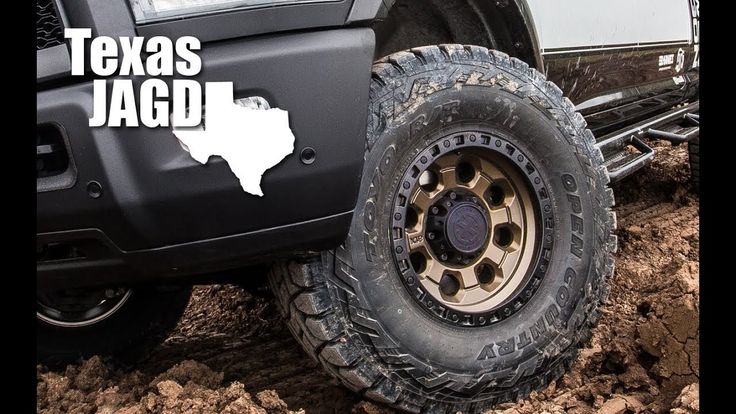 If you raise or lower your elbow during a cut, an extra hole or an area that is not selected in depth will appear on the tread.
If you raise or lower your elbow during a cut, an extra hole or an area that is not selected in depth will appear on the tread.
When cutting thick truck tires or cast tires for special vehicles, this error can be corrected by transferring them to a car repair shop. Thin passenger tires do not forgive such failures. You can ruin a tire in just one awkward move. Therefore, most often, owners of old tires for UAZ, ZIL or GAZ take up self-cutting, but it is better for owners of passenger cars to restore their tires only in the workshop.
Winter Drive protection
Tires Goodyear UltraGrip Arctic 2 SUV
Winter Drive Protection Sound Comfort
Rating:
4.5
Tires Goodyear UltraGrip Ice 2
Winter Drive protection
Tires Goodyear UltraGrip Performance+ SUV
Winter Drive protection
Tires Goodyear UltraGrip Arctic 2
Winter Drive Protection Run On Flat Sound Comfort
Tires Goodyear UltraGrip Performance+
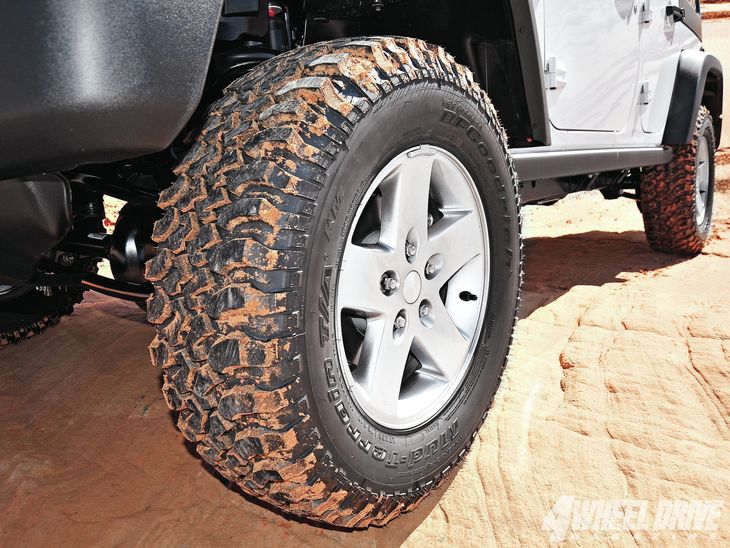 After that, carry out the entire complex for cleaning the wheels before selling - remove the dust, wash the rubber from the inside and out, perform blackening. It is much more pleasant to work with a clean tire, especially if you do all the work with your own hands and home tools.
After that, carry out the entire complex for cleaning the wheels before selling - remove the dust, wash the rubber from the inside and out, perform blackening. It is much more pleasant to work with a clean tire, especially if you do all the work with your own hands and home tools. 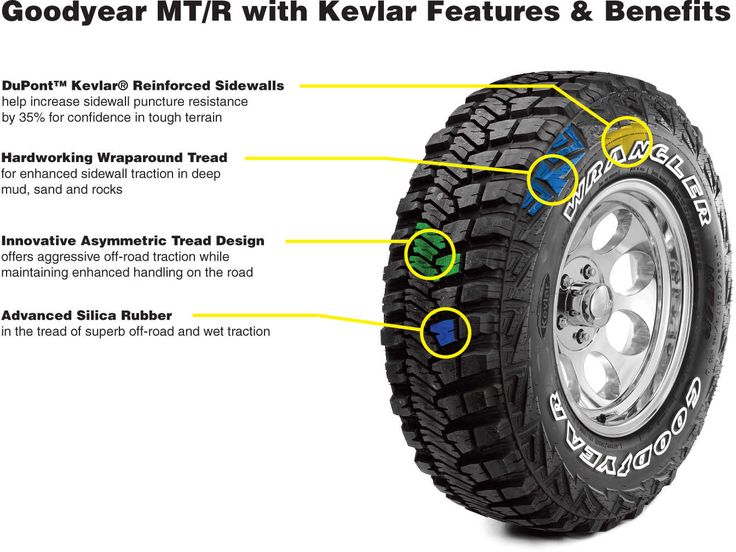 Just do not press the tool on the tire - this way you can cut the rubber through and through. A professional does the job in several passes.
Just do not press the tool on the tire - this way you can cut the rubber through and through. A professional does the job in several passes.
This video shows the sequence of processing a tire by a professional groover. As you can see, the master uses special nozzles that allow you to neglect measuring the depth of cut. This saves time and improves the quality of processing.
This saves time and improves the quality of processing.
If you want to go that route, first check how much professional cutting equipment costs. It is possible that its price will seem excessive to you, and you will prefer to order this work from professionals.
This video shows how the homemade tool works. A machine made from a conventional soldering iron works no worse than professional equipment. A heavily worn tire is covered with new grooves in just 6-7 minutes. But if you want to go this route, pay attention to the impossibility of adjusting the depth of cut. In fact, it depends on the pressing force. The author of the video suggests “cutting the tire as you like,” which does not guarantee the long life of the rubber and the safety of the vehicle owner.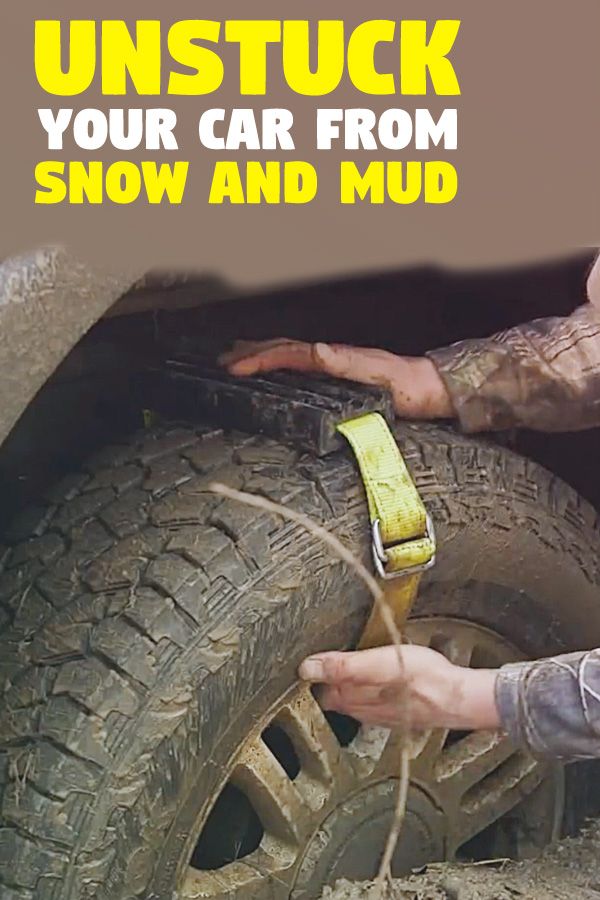 Thoughtless work can provoke a wheel break right while driving on the highway.
Thoughtless work can provoke a wheel break right while driving on the highway.
Author of the article: Goodyear team
Rubber is a flexible polymer material that is difficult and cumbersome to cut. It reacts to high temperatures and can be deformed. Synergy performs waterjet cutting of rubber, regardless of its thickness and characteristics. With the help of special technology, high cutting accuracy is achieved, with perfectly even edges.
Water jet mixed with abrasive material is used for cutting by water jet. It is fed at high speed and pressure, which allows you to quickly and accurately cut the most durable products. Specialists set a program for curly or conventional cutting, designate the contours and coordinates of the cut. This method is also suitable for the manufacture of non-template samples, replacement of damaged gaskets of imported cars or units. We work with orders of any complexity and volume. This type can be used for thin and thick sheets. The product after processing is obtained with smooth edges, without melting, notches and other damage. Cutting mud rubber can save a lot of money and extend the service life. Width and depth vary by tire brand and manufacturer. The professional work of our specialists can become the key to your safety. Modern technologies make it easy to process rubber, cut curly samples with high accuracy. Our company will create drawings of any complexity, save templates, reproduce any original drawing and project.
We work with orders of any complexity and volume. This type can be used for thin and thick sheets. The product after processing is obtained with smooth edges, without melting, notches and other damage. Cutting mud rubber can save a lot of money and extend the service life. Width and depth vary by tire brand and manufacturer. The professional work of our specialists can become the key to your safety. Modern technologies make it easy to process rubber, cut curly samples with high accuracy. Our company will create drawings of any complexity, save templates, reproduce any original drawing and project.
Advantages of waterjet cutting:
Rubber cutting, by far the most requested service.